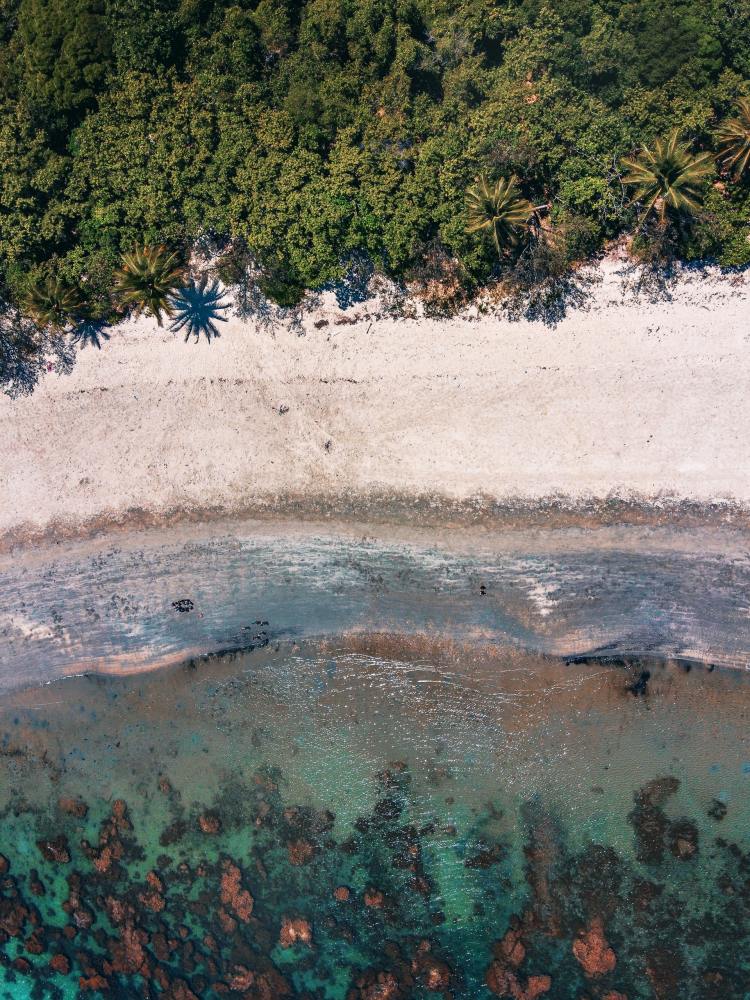ALLEN SHEATHER
During the dodgy dealing days of the 70s and 80s, prior to World Heritage Listing in 1988, there was significant subdividing of Daintree Coast lowland rainforest. What had previously been large, rural properties of around 100 acres, were purchased by real estate speculators and subsequently subdivided into many smaller lots with the aid of a compliant Queensland State Government. This quest for profits by a few resulted in approximately 1138 individual lots between the Daintree River and just beyond Cape Tribulation. The potential population that could have been settled on these lots runs into the many thousands and would have threatened the integrity of the World Heritage Daintree Coastal Rainforest.
Over a number of years, a small number of dedicated individuals have worked hard to secure commitments of public funds to reverse some of those potential impacts, but unfortunately available funds have always fallen short of being enough to do the job. However, the results of those efforts coupled with the steady work of conservation organisations that have also purchased land for protection, has meant that we have avoided the catastrophic picture that we were faced with back in the 90s. In spite of these efforts we still have population pressures that may well be beyond the Daintree Coasts ability to withstand.

As it stands today 467 of those original 1138 lots have some level of settlement on them. Settlement that ranges from modest clearings with little more than a shed to complete removal of the rainforest and full settlement. Our research has identified that there are still 136 unsettled properties that can be legally settled and have relatively intact forest and a further 50 lots that remain unsettled but have been stripped of their settlement rights because they fall within the conservation zones. We don’t believe that the Daintree Coast can safely endure a further 136 families settling into the area, with the usual weeds and domestic animals that always seem to accompany them, without seriously compromising the World Heritage values for which it is renowned.
The Daintree Coast is struggling with what is there today. We constantly hear calls from a small cohort of those residents to provide services that were always going to be beyond the scope of the nation’s taxpayers or local ratepayers. Services that are not in keeping with the very place in which they had chosen to live. The most significant of these pending threats is the push for a reticulated power supply throughout the entire area.
Previous studies have shown that this would be prohibitively expensive and would never be able to function without the continuous injection of public funds. Costs are increased by the fact that fewer than 40% of the residents have indicated a willingness to connect to a reticulated power grid preferring instead to have some modest support to improve their stand alone power supplies.
The proposed micro-grid will also be far more damaging to the environment than the proponents claim and has now been found to be not a “green” power supply at all.
The Daintree deserves better than this. We need to complete the job that we set out to do by taking the last unsettled properties off the table and giving the rainforests, that we know and love, the best chance to survive.
Think Different. Think DouglasNews.Network.
Your support matters. Support from our readers helps protect our editorial independence. Help us to report fearlessly on issues that affect our region, and to challenge those in power. Help us continue to deliver quality, trustworthy, fact-checked journalism that is free to access.






The largely ignored conservation problem in this area is the continuing siltation of the creeks, rivers and inshore reefs by the Bloomfield Track. Sealing the road from the ferry to Cape Tribulation has provided the perfect fix for that in the southern end. A few years ago the DSC put 200mm of gravel on the entire 32 km, this has now washed away onto the creeks rivers and GBR. Such is the rate of erosion on unsealed surfaces. The view today of dirty brown water over the inshore reefs, after a few days of light rain was disappointing. The millions spent on that gravel would not have been far short of complete sealing. Now will they do it again or let it become a wet season quagmire and a dry season dust bowl again.
‘The proposed micro-grid will also be far more damaging to the environment than the proponents claim and has now been found to be not a “green” power supply at all.’
Any evidence of either assertion? Nup. I smell bullshit.
Great article. So many more issues. It is complicated, but one major issue not being addressed is the willingness/ability for larger land owners to ‘reduce’ their m2 for conservation purposes. Eg. There are many 10ha+ properties who utilise only 20%or less. I have one and know of many who would like to reduce for ‘fair compensation’ and/or partial donation. This includes ‘commercial land’ that has not been developed. This should be addressed but is virtually impossible after initial consultation with DSC planning Dept. ,🤔 ☹️